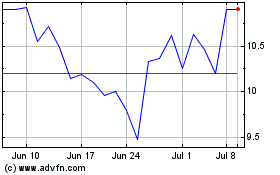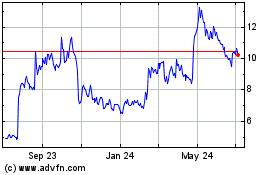UNITED STATES
SECURITIES AND EXCHANGE COMMISSION
Washington, D.C. 20549
FORM SD
Specialized Disclosure Report
Ultralife Corporation
(Exact name of Registrant as specified
in its charter)
Delaware
(Jurisdiction of incorporation or organization)
000-20852
(Commission file number)
2000 Technology Parkway, Newark, New
York 14513
(Address of principal executive offices)
Philip A. Fain 315-332-7100
(Name and telephone number of the person
to contact in connection with this report)
Check the appropriate box to indicate the rule pursuant to
which this form is being filed, and provide the period to which the information in this report applies:
| ☒ | Rule 13p-1 under the Securities Exchange Act (17 CFR 240.13p-1) for the reporting period from January 1 to December 31, 2014 |
Section 1 – Conflict
Minerals Disclosure
Items 1.01 Conflict
Minerals Disclosure and Report
A copy of Ultralife Corporation’s
Conflict Minerals Report for the year ended December 31, 2014 is filed herewith as Exhibit 1.02 and is publicly
available at http://www.investor.ultralifecorporation.com
Section 2 – Exhibits
Item 2.01 Exhibits
Exhibit 1.02 – Conflict Minerals Report as required
by Items 1.01 and 1.02 of this Form.
SIGNATURES
Pursuant to the requirements of the Securities Exchange Act
of 1934, the registrant has duly caused this report to be signed on its behalf by the duly authorized undersigned.
ULTRALIFE CORPORATION
(registrant)
| Title: | Chief Financial Officer and Treasurer |
Exhibit
1.02
Ultralife
Corporation
Conflict
Minerals Report
For
the Year Ended December 31, 2014
Background – Dodd Frank
The United States Securities and Exchange Commission
(“SEC”) has promulgated rules pursuant to the Dodd-Frank Wall Street Reform and Consumer Protection Act of 2010
(“Dodd Frank”), which require companies which file periodic reports with the SEC to prepare and file a report
disclosing whether such companies’ products contain certain metals (gold, tungsten, tantalum and tin –
collectively the “conflict minerals”, or “3TG”), the commercial trade in which is believed to
partially finance or benefit armed groups operating in the Democratic Republic of Congo (“DRC”) and surrounding
region (the “Conflict Area”). These 3TG minerals are referred to as “conflict minerals” whether or
not they are sourced from the Conflict Area.
The objective of these rules is ultimately to reduce, if
not eradicate, the flow of funds to armed groups in the Conflict Area by requiring registrants to demand transparency over their
supply chain sourcing of conflict minerals.
Section 1 - Company and
Products Overview
This is the Conflict Minerals Report of Ultralife Corporation
(“Ultralife”, “we” or “our”) for the calendar year ended December 31, 2014, in accordance with
Rule 13p-1 under the Securities Exchange Act of 1934.
We offer products and services including portable power solutions
and communications and electronics systems to customers across the globe in the government, defense and commercial sectors. With
an emphasis on strong engineering and a collaborative approach to problem solving, we design, manufacture, install and maintain
power and communications systems including: rechargeable and non-rechargeable batteries, charging systems, communications and electronics
systems and accessories and custom-engineered systems.
We report our results in two operating segments: Battery
& Energy Products and Communications Systems. The Battery & Energy Products segment includes: lithium 9-volt, cylindrical
and various other non-rechargeable batteries, in addition to rechargeable batteries, uninterruptable power supplies, charging systems
and accessories. The Communications Systems segment includes: RF amplifiers, power supplies, cable and connector assemblies, amplified
speakers, equipment mounts, case equipment, man-portable systems, integrated communication systems for fixed or vehicle applications
and communications and electronics systems design.
This report has been prepared by the management of Ultralife
Corporation and includes the activities of all of our majority-owned subsidiaries.
Supply Chain Overview
Many of our products contain electronic circuitry and electronic
components that we believe contain conflict minerals. We purchase such electronic circuitry and components from third-party suppliers
and do not directly utilize conflict minerals in our manufacturing process or products. We determined that during the 2014 calendar
year, we manufactured products containing conflict minerals and that the use of the minerals is necessary to the functionality
or production of these products.
Our supply chain is complex. There are generally multiple
tiers between our company and the mines from which the conflict minerals are sourced. We rely upon our suppliers to provide information
on the origin of conflict minerals contained in components and materials supplied to us, including sources of 3TG that are supplied
to them from sub-tier suppliers.
We identified suppliers from which we acquire components
that we believe are likely to contain conflict minerals (generally, our suppliers of electronic circuitry and electronic components)
and communicated with each, via letter, regarding the relevant, emerging SEC requirements and our expectation that they will exercise
diligence in providing us conflict mineral sourcing information so as to enable us to comply with the SEC’s rules.
Reasonable Country of Origin Inquiry (“RCOI”)
We sent the identified suppliers a written communication
requesting self-declaration and identification of the origin of any conflict minerals contained in the products provided to Ultralife
Corporation. We developed a reporting template which we sent to the twenty vendors from which we acquire components that may potentially
contain conflict minerals. We believe our RCOI process was reasonably designed to determine whether conflict minerals used in our
products originated in the Conflict Area or came from recycled or scrap sources. We further believe our RCOI process was performed
in good faith, and that our conclusions, as set out herein, were reached with a reasonable level of accuracy and certainty.
Of the twenty affected suppliers, we initially received eight
responses. Of the twelve suppliers who did not respond to our first inquiry, we sent second requests and followed up by mail and/or
email and received eight additional responses. Despite our efforts, we did not receive responses from four suppliers.
The responses we received included declarations from certain
suppliers that the suppliers’ products contain no conflict minerals, declarations from certain suppliers that the suppliers’
products contain no conflict minerals sourced in the Conflict Area, declarations that a number of suppliers to the effect that
they have no reason to believe that their products contain conflict minerals sourced in the Conflict Area, as well as declarations
that the source of the conflict minerals in their products is “conflict undeterminable.”
Due to the breadth and complexity of our products and supply
chain, it will take time for many of our suppliers to verify the origin of all of the minerals included in their products, and
they may not succeed in determining with significant confidence the origin of all or any such minerals.
Section 2 - Due Diligence framework
We are designing our due diligence measures to be in conformity
with the internationally recognized due diligence framework as set forth in the Organization for Economic Cooperation and Development
(“OECD”) Due Diligence Guidance for Responsible Supply Chains of Minerals from Conflict-Affected and High-Risk Areas
(OECD, 2013) and related supplements for 3TG (“OECD Framework”).
Section 3 - Due Diligence Measures Undertaken
Our due diligence efforts for the calendar year ended December
31, 2014 included the following:
| · | We surveyed 25 of our electronics components suppliers from which
we believe the products we purchase may contain conflict minerals, and (after second and third requests) received a total of sixteen
responses, or 64%. We evaluated the responses we received for consistency and completeness of data provided to identify any contradictions
or inconsistencies in those responses. |
| · | For the few suppliers who provided smelter or refiner information
for applicable 3TG minerals, we began the process of analyzing and comparing these smelters and to the list of facilities which
have received a “conflict-free” designation from the Conflict Free Smelter Program (“CFSP”) developed by
the Electronics Industry Citizenship Coalition/Global e-Sustainability Initiative (“EICC/GeSI”). |
| · | Suppliers who provided incomplete information or who failed to respond
to our request for information were contacted twice asking for either clarification or to provide the information requested. |
| · | Our supply chain for our products is very complex, and there are often
many tiers in the supply chain between our direct supplier and the original sources of the necessary conflict minerals. We do not
purchase necessary conflict minerals directly from mines, smelters or refiners. As such, we rely completely on our suppliers to
provide information regarding the origin of the necessary conflict minerals that are contained in the products we purchase from
them. Additionally, we believe that the smelters and refiners of the necessary conflict minerals are best suited to identify the
sources of such minerals, and we have requested that our suppliers take steps to identify the applicable smelters and refiners
of the conflict minerals in our supply chain. As such, our due diligence efforts rely heavily on the CFSP and the efforts of our
direct suppliers. |
Section 4 – Independent Private Sector Audit
We are not required by Rule 13p-1 to obtain a private sector
audit of this Conflict Minerals Report for the year ended December 31, 2014, nor have we voluntarily submitted to such an audit.
Section 5 – Continuous Improvement Efforts to Mitigate
Risk
We plan to take the following steps to improve the number
and quality of supplier responses in the next compliance period in order to mitigate the risk that conflict minerals contained
in our products may directly or indirectly finance or benefit armed groups in the Conflict Area:
| · | Establish a robust our Company’s conflict minerals policy and
communicate the revised policy to all of our suppliers. Our policy will specifically require our suppliers to respond to our conflict
minerals information requests. Our revised conflict minerals policy will make clear our intent to move toward a conflict-free supply
chain, demand that our suppliers cooperate to the best of their ability in making that goal a reality, and will be published on
our corporate website. |
| · | Work with suppliers who did not respond to our 2014 survey to make
it clear to them the importance of cooperating with us in this initiative. |
| · | Work with suppliers who did not respond fully to our 2014 survey,
including applicable refiner/smelter information, to make clear to them the importance of their demanding such information from
their supply chains and providing this information to us. |
| · | Encourage our suppliers whose products contain conflict minerals to
establish policies, due diligence frameworks, and management systems consistent with the OECD framework. |
| · | Complete a conflict minerals reporting database to include all smelter
information that has been made available to us and complete the comparison of smelter information to the CFSP database. |
Conflict Minerals Status
Conclusion
Despite having conducted a good-faith RCOI and due diligence
process, we do not currently have nearly sufficient information from our suppliers to determine the country of origin of the conflict
minerals used in our products or identify the facilities used to process those minerals. While, based on our RCOI and due diligence
processes, we have no reason to believe that any of the conflict minerals contained in our products originated in the Covered Area
and may have benefited armed groups, we have concluded that we do not have sufficient information or visibility into our supply
chain to conclude that our products are conflict-free. Therefore, we have concluded that our supply chain remains “DRC conflict
undeterminable.”
Ultralife (NASDAQ:ULBI)
Historical Stock Chart
From Aug 2024 to Sep 2024

Ultralife (NASDAQ:ULBI)
Historical Stock Chart
From Sep 2023 to Sep 2024
